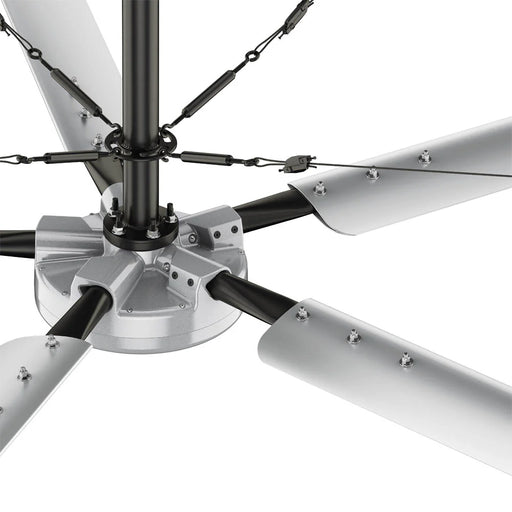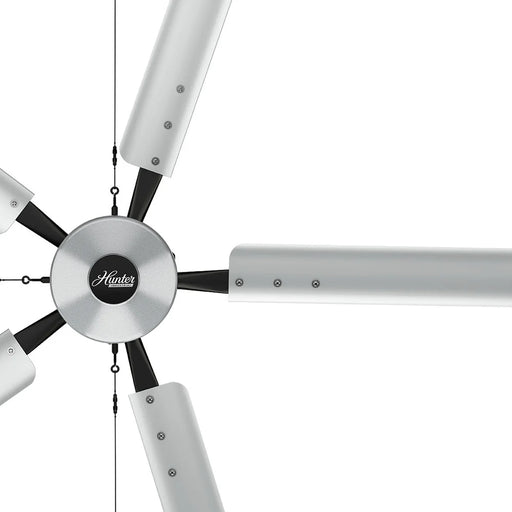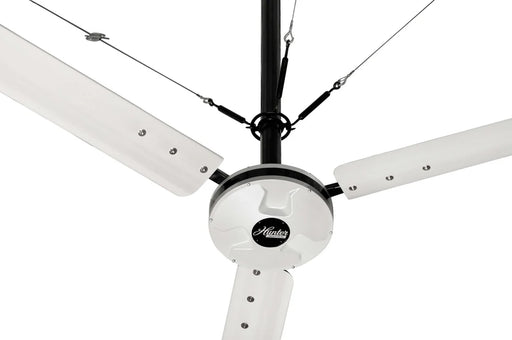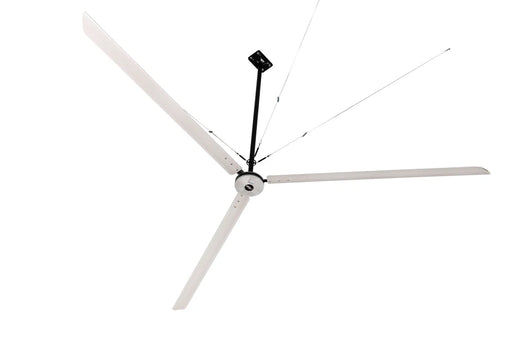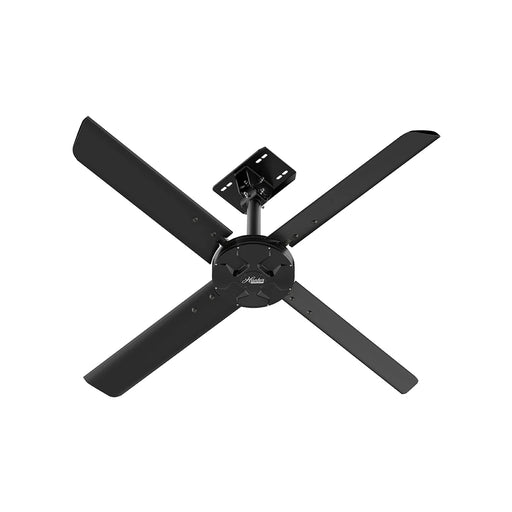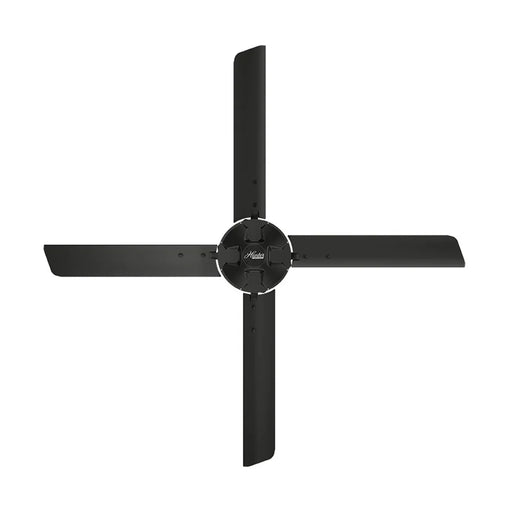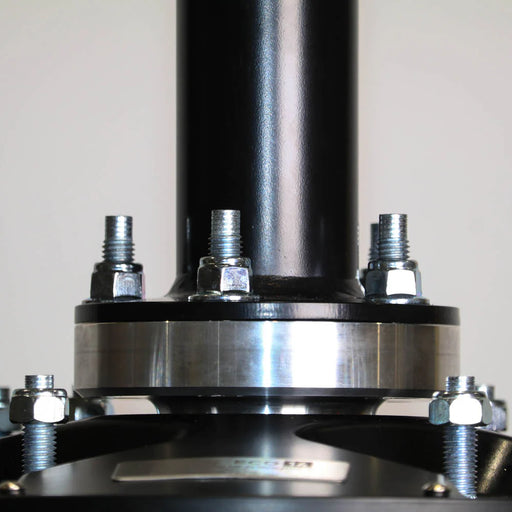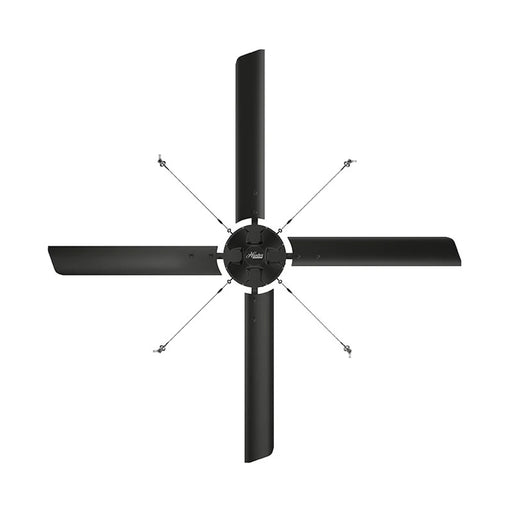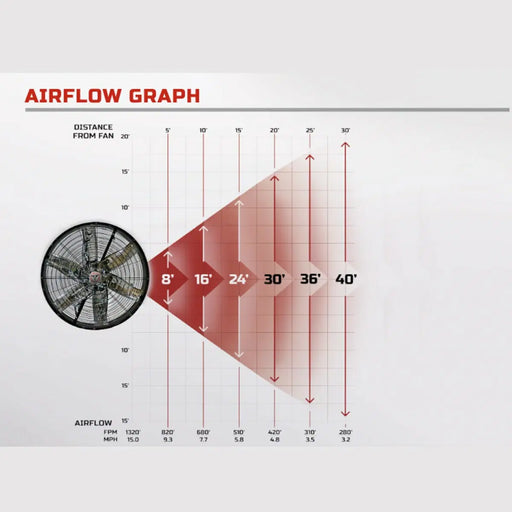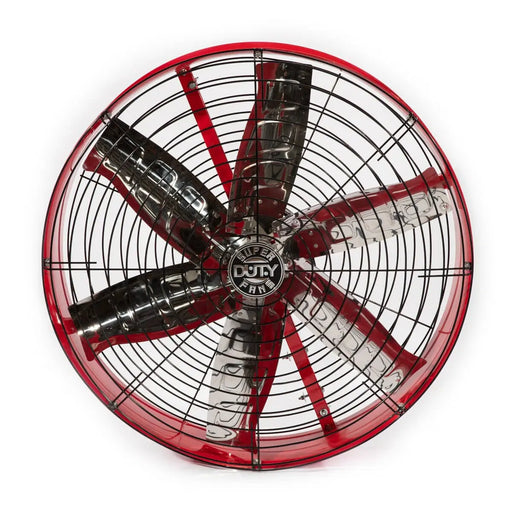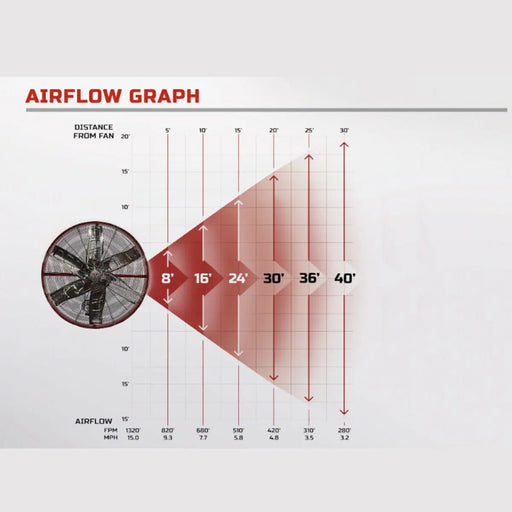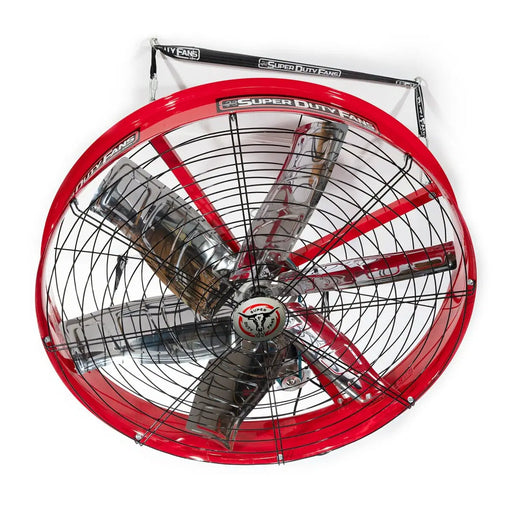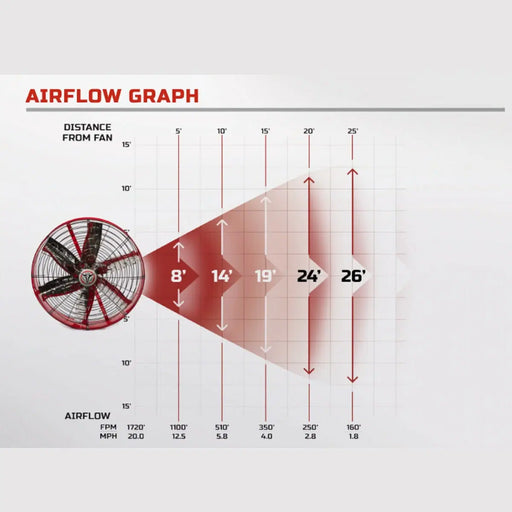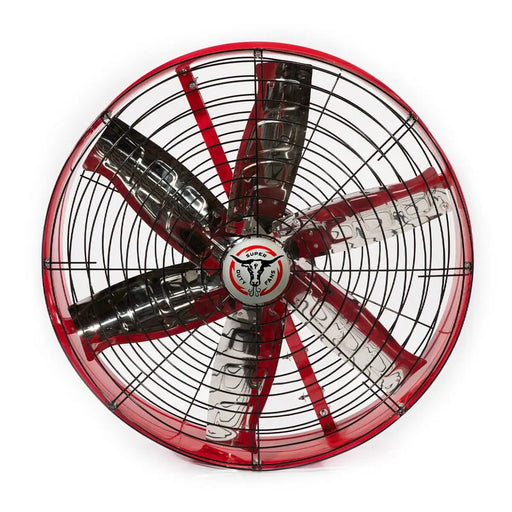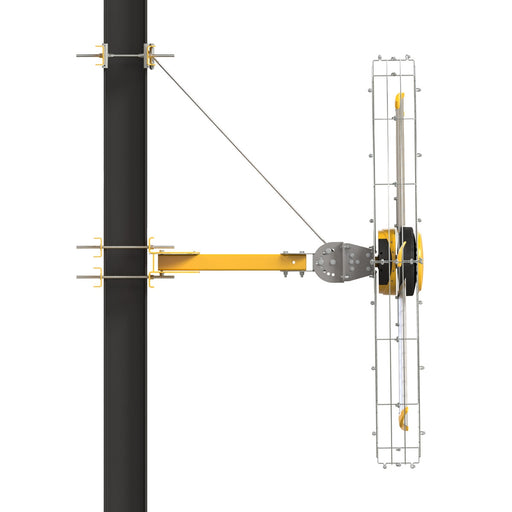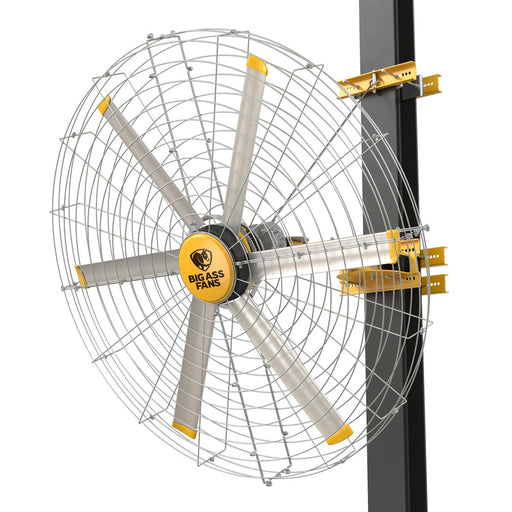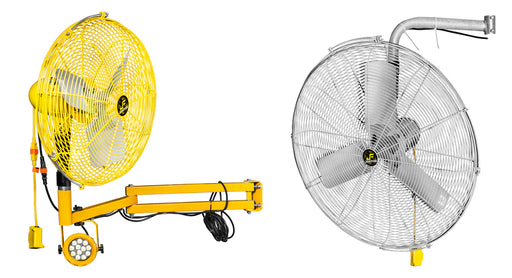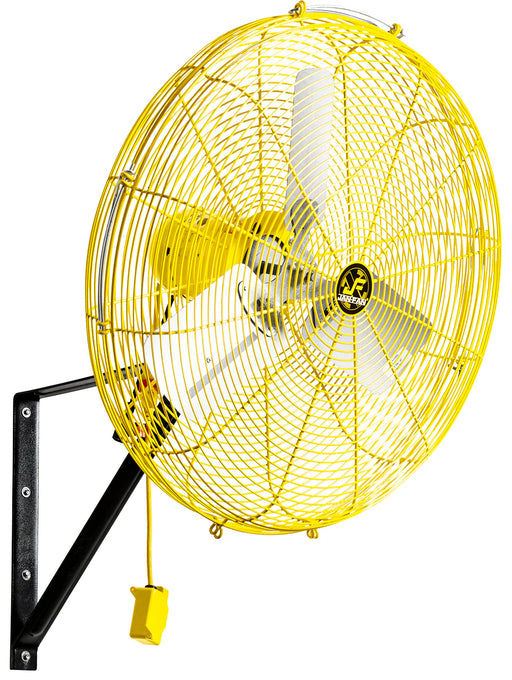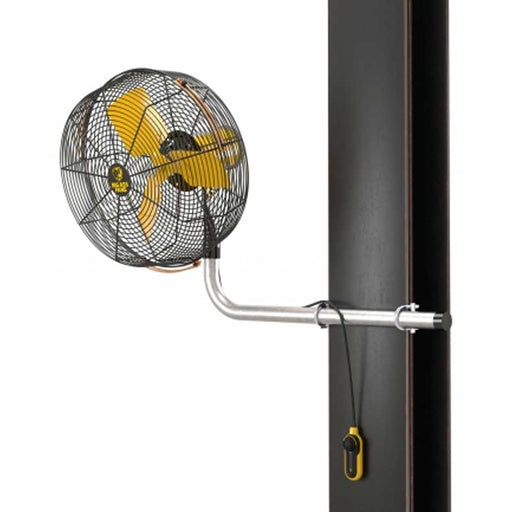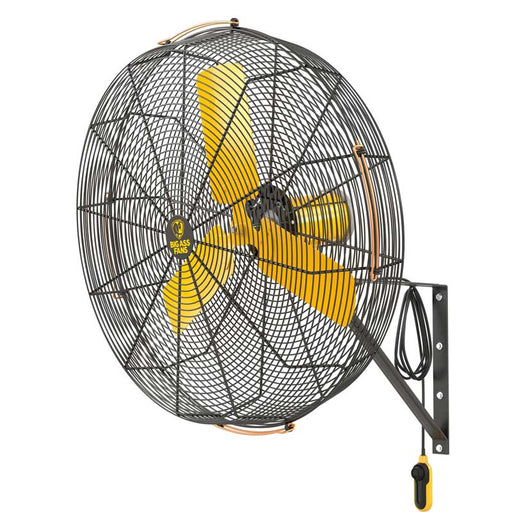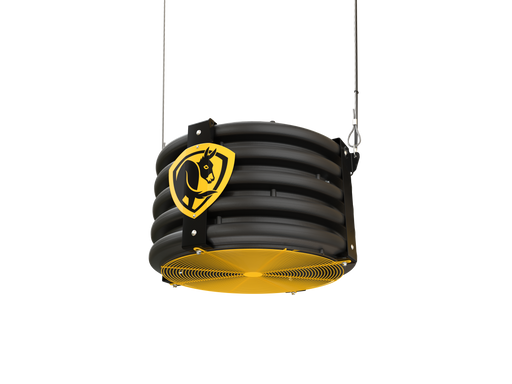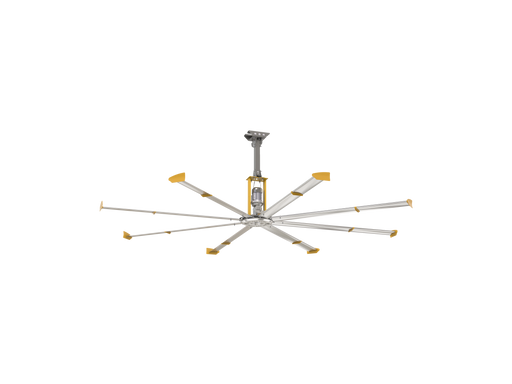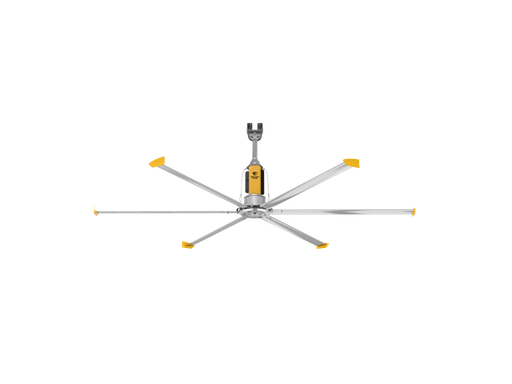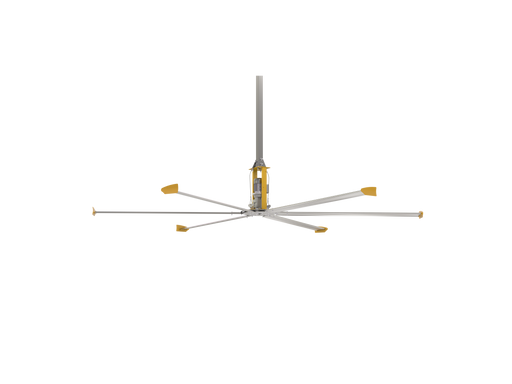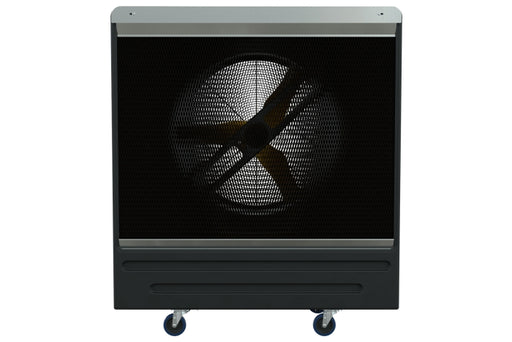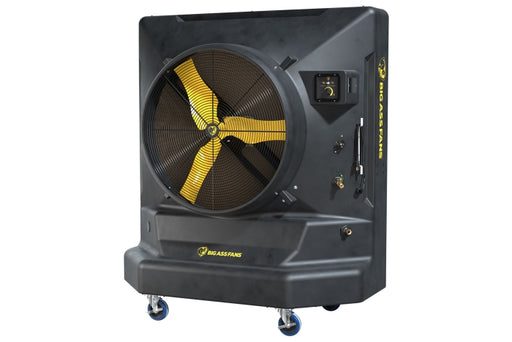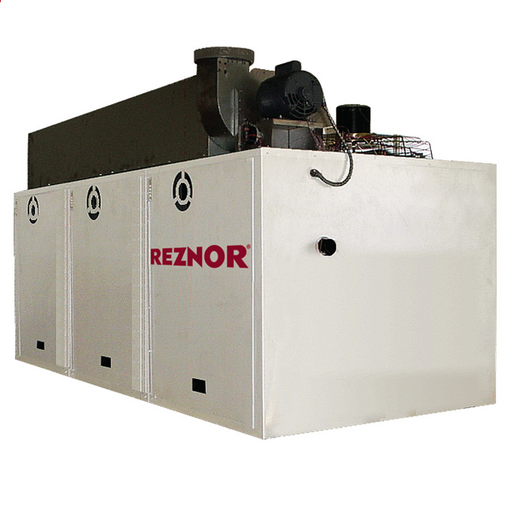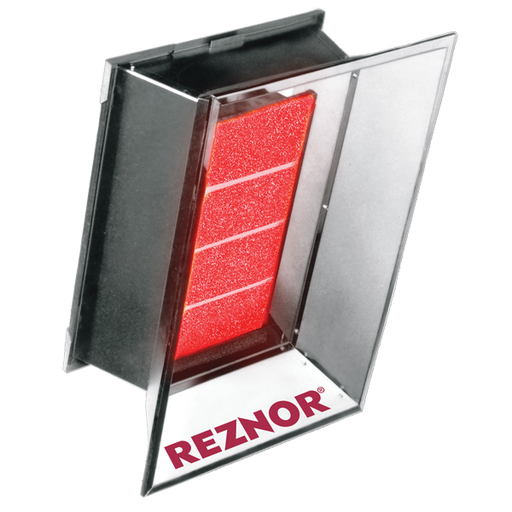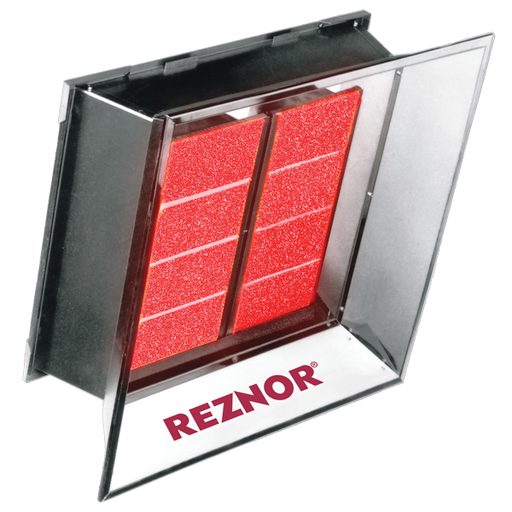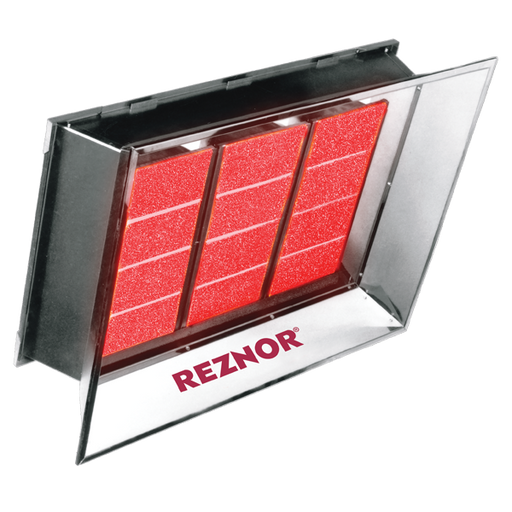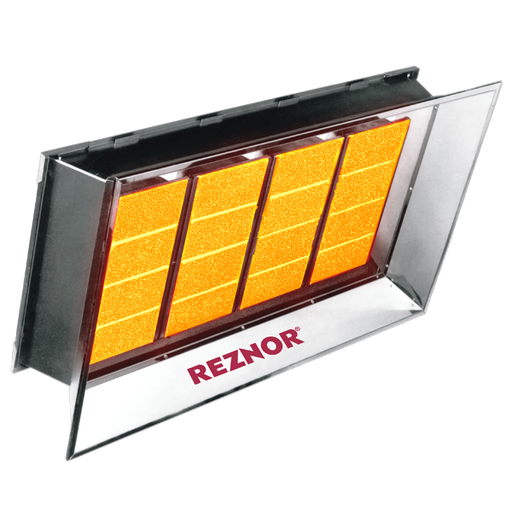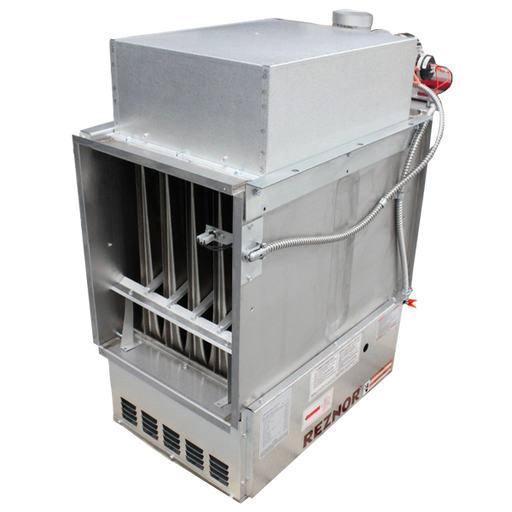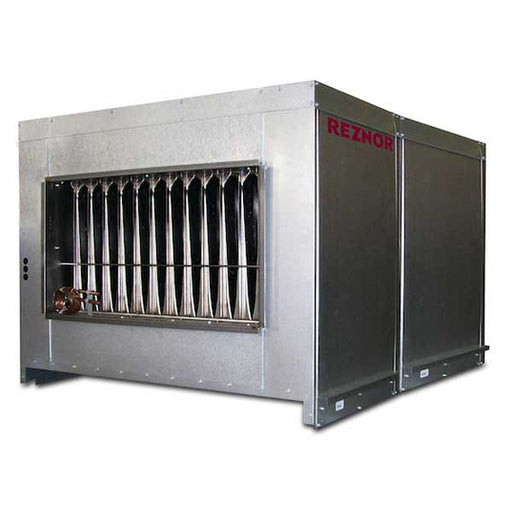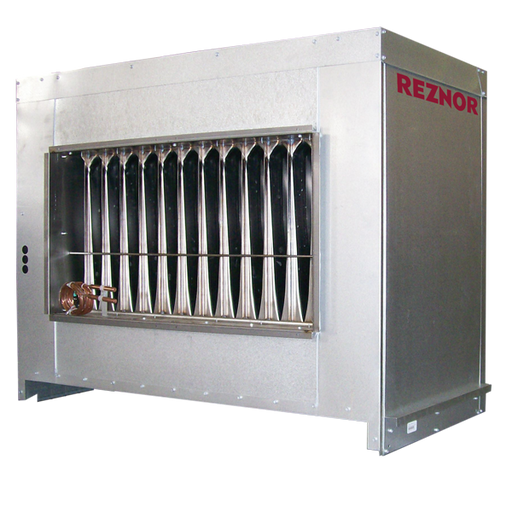Thankfully, modern industrial-grade warehouse fans can be relied upon to fill this gap at a great price point, helping warehouses to provide a comfortable work environment for personnel as well as protecting stored goods and equipment via climate control.
5 Benefits of Warehouse Fans
Fans have long been a simple, useful tool as they make use of the evaporative cooling effect to cool the body. Mechanical fans operate on the same principle and are actually fairly simple themselves, meaning it doesn’t take complex (expensive) equipment to achieve their promise. In addition to providing cooling, mechanical fans are the ideal choice to create air flow - a key ability to craft comfortable and safe interior climates when lacking HVAC systems.
For these reasons, an array of warehouse fans is more than capable of providing a comfortable interior warehouse climate to protect personnel, goods, and equipment at a dramatically reduced price point as compared to industrial HVAC systems. Let’s break down their benefits.
1. Cooling
Warehouse fans provide cooling by instigating the evaporative cooling process. When air passes over the skin, this process releases energy from the body and cools the skin surface, which blood can then circulate throughout the body. A simple breeze is all it takes to turn a miserable situation into one that is quite comfortable, and modern warehouse fans do this exceptionally well while requiring minimal amounts of energy to do so.
2. Improved Air Flow
Without HVAC systems, it’s challenging to impart any air flow whatsoever in the cavernous expanses of warehouses. Warehouse fans answer this call by moving air such that it can be modulated to provide cooling and even heating, in addition to keeping it fresh and providing the air current necessary for exhaust fans to perform excellent air exchange.
3. Support for Ventilation
Ventilation is another key component of maintaining air quality and controlling the warehouse climate. Without an HVAC system, effective ventilation can be challenging to achieve. Warehouse fans contribute to improved ventilation by enhancing air flow, as well as being utilized as exhaust fans in walls and ceilings for air exchange. This turns a non-ventilated space into one with proper ventilation capabilities.
4. Destratification
Warehouses are known for their large spaces and high ceilings, which lead to air stratification—where air forms layers based on temperature, with warmer air rising to the top. This stratification can result in uneven air quality and temperature gradients. Specific warehouse fans are uniquely capable of destratification of these layers, mixing the air to create a more uniform environment. By doing so, they help improve air quality and enable better climate control. In colder months, reversing the direction of warehouse fans can circulate warm air downward, enhancing heating efficiency.
5. Save on Energy Costs
Perhaps the most attractive aspect of warehouse fans is that they can achieve all of this at a great price point. Even though industrial-grade warehouse fans are certainly highly-engineered, the principle of fans is simple, meaning the cost of top-of-the-line fans pales in comparison to the costs of a warehouse HVAC system. Better still, the energy required to run warehouse fans is minimal.
Types of Warehouse Fans
HVLS Fans
High volume, low speed (HVLS) fans are the go-to warehouse fan for providing all of the above benefits. Due to their long blades, these fans are able to move tremendous amounts of air while spinning slowly. This means that they are highly energy-efficient. Even just a couple HVLS fans in a large warehouse can be enough to provide cooling structure-wide for personnel, the air flow necessary to feed fan-based ventilation systems, as well as provisioning fresh air. Because of the tendency of warehouse air to stratify, HVLS fans are adept at destratifying, or mixing the air layers, which allows for the harnessing of the air’s energy for cooling and heating alike.
Directional Fans
Directional fans are smaller warehouse fans that provide a powerful stream of air in a more targeted fashion. These fans are ideal for situations in warehouses where only certain areas need cooling. Directional fans are readily mounted onto walls and can be directed where that stream of air is needed. They can also be utilized for targeted air flow to help exhaust fans achieve ventilation processes.
Box and Drum Fans
Box and drum fans are very similar to directional fans except they are positioned on the floor, making them mobile. These fans are thus a great option to have fans that can be used dynamically in the warehouse when needs arise.
Exhaust Fans
Exhaust fans are the fans utilized to craft a great ventilation system in the warehouse. Wall-mounted exhaust fans and roof/ceiling mounted exhaust fans, when provided with air flow from HVLS and/or directional and floor fans, can greatly increase the capabilities of air and climate control by venting the warehouse and/or exchanging air with the exterior climate.
Warehouse Fans FAQ
Which Warehouse Fans are the Best?
Generally speaking, you might say that HVLS fans are the best warehouse fan simply because they can provide the most overall benefit with the least amount of equipment. They certainly can do much more than directional and floor fans, but that might not be necessary. If a facility isn’t in need of a fan to provide structure-wide cooling and air flow, then directional and/or floor fans might be a better option.
At the end of the day, an array of HVLS, directional, floor, and exhaust fans in combination is going to provide the most powerful and dynamic system.
Can Warehouse Fans Also Provide Heating?
Yes! HVLS fans in particular can provide heating by destratification of the air in warehouses with tall ceilings. Since hot air rises, HVLS fans in winter months can be reversed so that they pull that warm air down to the floor and provide heat.
Can Warehouse Fans Help Air Conditioning Systems?
Yes, warehouse fans are a great help with HVAC systems as they can take some of the load and therefore decrease wear and tear on the HVAC system in addition to lowering energy costs.
For warehouses that really need HVAC systems, or smaller warehouses where the necessary HVAC system isn’t grossly expensive, the addition of warehouse fans can save a significant amount of money by lessening the load on the HVAC system.
TBC Supply is the Go-To Supplier for Warehouse Fans
TBC Supply works with the best manufacturers to provide our clients with the best warehouse fans in the industry.
To learn more about warehouse fans and the right solutions for your specific needs, contact our experts today.

